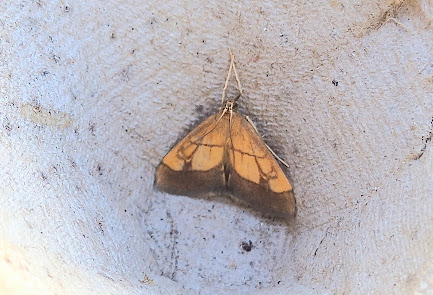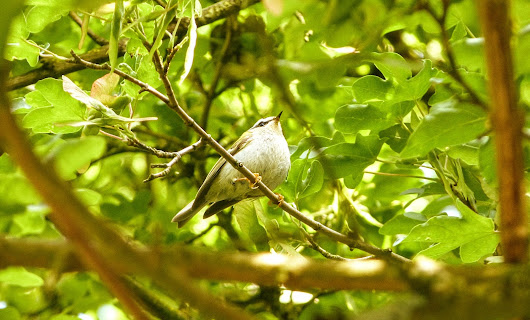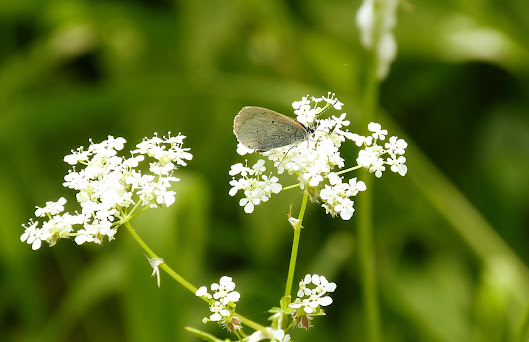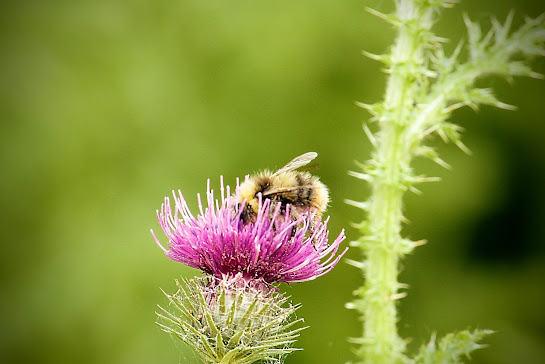Saturday 1st June 2024.
Saturdays are producing some great sightings when I am out and about birding with Mssrs. Fisher and Farwell and today was no exception either. It was an earlier start than normal as I picked Geoff up at his house. The weather looked good throughout the day, though there was a breezy northerly wind. The Moth Boxes produced some excellent moths and plenty of ‘year-ticks’ too to add to my year list. Our destinations today were to be a spot near Chalton village, just off the A3 and then on to Noar Hill, near Selbourne, for the abundant wildlife there including up to FIVE species of Orchid. I even picked up another moth ‘lifer’ here as well!
The Moth Boxes:
This morning, there were a good number of moths present and I believe the most that has been recorded so far this year. Six more moths that were new for the year were present today including a fine Small Ranunculus, Light Emerald, Dark Arches and the micro moths Garden Pebble, Red-barred Tortrix and a Large Pale Masoner moth. A total of 58 moths of 22 species were recorded which also included an Oak-tree Pug and a Treble Lines; two species I rarely get in my garden.
The moths recorded this morning included the following:
- Small Ranunculus (New for Year)
- Light Emerald (NFY)
- Common Pug
- White Ermine 6
- Oak-tree Pug
- Silver Y 5
- Garden Carpet 2
- Buff Ermine 4
- Marbled Minor 2
- Common Carpet Moth
- Shuttle-shaped Dart 6
- Vine’s Rustic
- Pale Mottled Willow 9
- Bright-line Brown-eye 7
- Dark Arches 3 (NFY)
- Treble Lines
- Green Pug
- Garden Pebble (NFY)
- Light Brown Apple Moth 2
- White-shoudered House Moth
- Red-barred Tortrix (NFY)
- Large Pale Masoner (NFY)
Over at Andy Fisher's moth box, it got even better with even more ‘year-ticks’ to be added. FIVE moth species present here this morning were new for the year and a good total of at least 25 moths of 21 species were recorded over a nice cup of coffee and a good chat with the guys. Scorched Carpet was a particularly nice looking moth, but I did not expect to see a Dark-bordered Pearl so early in the year. Twin-barred Knot-horn is also exceptional too; the last of this species I saw was over at The Oaks Crematorium last year when I set my moth box up there. Yes, some great moths present today and more were to come later on this afternoon, including another lifer.
The following moths were present here:
- Willow Beauty 2
- Freyer's Pug
- Small Dusty Wave
- Garden Carpet
- Brimstone Moth
- Scorched Carpet (NFY)
- Green Pug 2
- Cypress Carpet (NFY)
- Treble Lines
- Common Pug
- Light Emerald
- White-point
- Bright-line Brown-eye
- Shuttle-shaped Dart 3
- Vine’s Rustic
- Heart & Dart
- Garden Pebble
- Dark-bordered Pearl (NFY)
- Tawny Grey (NFY)
- Green Oak Tortrix (NFY)
- Twin-barred Knot-horn (NFY)
Chalton, nr Clanfield:
For obvious reasons, I shall not disclose the exact site where we were watching from today hoping to find our first Turtle Doves of the year, other than to say that it wasn't too far from the village of Chalton, just off the A3. I wanted to get there early this morning in hoping to finding our first Turtle Doves of the year. We had no luck last Saturday at Martin Down, but this site has proved a good one for the species over the past few years. Luckily for us, we did eventually see one bird that showed very well, albeit a bit distant; but it looked stunning in the sunshine through my scope.
While waiting for the Turtle Dove to show, there was a good variety of birds to be seen here over the next couple of hours. However, I made a huge ‘foo-pah’ when I mistook a Mistle Thrush for what I thought was a Turtle Dove. It happens to the best of us, honestly!! Both Red Kite and Common Buzzard were seen flying over the countryside and nearby, a Common Whitethroat was heard and seen displaying several times near where we stood. Its rarer cousin, the Lesser Whitethroat, was heard singing in the distance, but too far away for a sighting. Up to three Med Gulls flew north along the Down and both Jay and Stock Doves were seen flying over the fields.
A Great Spotted Woodpecker flew in front of us and landed into a distant tree and way in the distance, over the fields, good numbers of Swallows were hawking for insects along with several Swifts. On the subject of Swifts, large numbers of Swifts were arriving into the UK this morning, especially along the south coast where various birders were reporting very large numbers moving north. Apparently, there has been some huge thunderstorms in northern Europe and has pushed a lot of Swifts in our direction! When we first arrived and parked up, we made our way up to our usual site and came across a singing male Firecrest in trees by the side of the road and this was arguably the most photographic Firecrest I have seen for a long time. I did, incidentally, rescue what I thought was some type of Caterpillar, but it turned out to be a Glow worm Larvae crossing the road! Meanwhile, back to the Turtle Doves; both Emma and Matt Parkes had arrived here at this site also looking for the Doves roughly about an hour after we left. They were actually treated to four birds present here and the photos Emma took were superb.
Noar Hill, Selbourne:
As we were so close to Noar Hill (some 20 minutes away), I thought we could take a look at this site again seeing the whole area was swarming with Orchids on display. Our target species was the Musk Orchid; a tiny plant that Geoff picked up very quickly, but not before we enjoyed the superb plant Orchid spectacle of Common Spotted, Fragrant, Early Purple and Pyramidal Orchids as well as numerous Twayblades. More on plants later.
The bird life here was also abundant. Blackcaps, Common Whitethroat and Chiffchaffs were in good numbers singing and busy holding territories and Yellowhammers were singing from various areas around the vicinity of this beautiful place. Overhead, both Common Buzzard and Red Kites showed well and even a Kestrel was seen hovering nearby. A couple of Firecrests were heard singing deep within the woodland and Bullfinches could be heard deep within the brambles, though I did get to see one bird briefly. Both Great Spotted and Green Woodpeckers were present; the latter species seen flying away from us from probably ‘anting’ on the many Ants nests present.
This area is good for butterflies and today and there were a lot more butterflies than the last time we were here a few weeks back. Both Common and Small Blue butterflies were abundant, whereas the Green-veined White, Large White, Dingy Skipper and a Small Heath were in single figures. We even found some interesting moths that included Cinnabar Moth, Birch Tortrix, Meadow Grass-moth, Silver-ground Carpet, Common Carpet and best of all, my first ever Hedge Beauty (Alabonia geoffrella); a small but beautiful micro moth.
Geoff was keeping us up to date on all the plants growing here. As well as the Orchids, there were plants such as Welted Thistle, Kidney Vetch, Salad Burnet, Mouse-ear Hawkweed, Meadow Buttercup, Yellow Wort, Wild Thyme, Milkweed, Black Medic and a huge Knapweed Broomrape plant. While checking out the large puddle containing the Fairy Shrimps, Geoff found the Brooklime plant growing close by. Among all these beautiful plants, the delicate Quaking Grass was seen in abundance. This place attracts both entomologists and Botanists and there was some chap, who was an Entomologist, searching for bugs and insects with a huge sweep net. Regarding insects, I took many photos of the insects we saw up here and after checking them on Google, we had the likes of Dock Bug, Woundwort Shieldbug, Narrow-striped Rhogogaster (never heard of it before today!), False Oil Beetle, Bramble Sawfly, Bloody-nosed Beetle and a Bumblefly (Bee-mimic Hoverfly). What a place!
I had promised my wife that I would not be home late today and so made our way back home around 2.30pm. Emma and Matt Parkes went up to Woolbeding after Chalton to get another look at the Honey Buzzards there and had just the one distant bird for their efforts. It was tempting to go down to Pennington Marshes this morning to see both the Roseate Terns and a Little Stint, but I really wanted to see the Turtle Doves today and thankfully, the trip paid off. An adult Rose-coloured Starling was reported in a private garden for a few hours today. Lets hope that hangs around for I missed the one that turned up at Martin Down a few years back. I have now seen 195 bird species in the UK so far, just 5 species away from the magic 200 and 186 of those were in Hampshire. Another 6 months to go and I wonder what will be seen in the second half of the year?






.jpg)


















































.JPG)




No comments:
Post a Comment